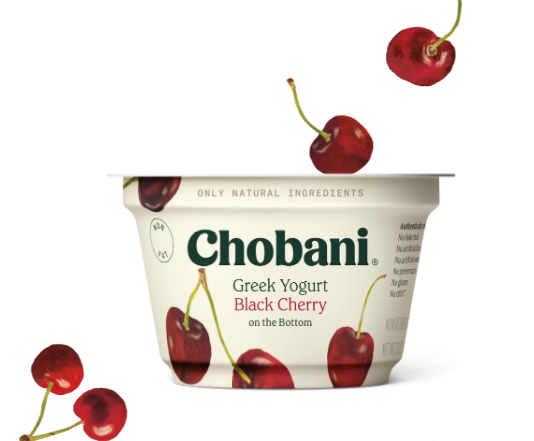The alarming statistic that roughly 85% of new products don’t succeed in their first year highlights the significant and complex challenges that companies in the CPG industry face. This high failure rate emphasizes the urgent need for extensive overhauls in market research, innovation, and consumer engagement strategies. In this text, you’ll see that a more profound understanding of the market, combined with swift responses to consumer feedback and trends, is crucial for reversing this trend of high failure rates. Also, we are going to show how co-manufacturing plays a crucial role when it comes to the success of a product launch.
Firstly, the problem of poor market fit is a major factor leading to the failure of new CPG products. Many companies hastily launch products without fully understanding or satisfying consumer needs. This discrepancy between product offerings and consumer expectations is largely due to inadequate or incorrect market research. To gain traction, products must solve actual problems or significantly improve consumer experiences compared to existing alternatives. Therefore, companies must invest more intensively in market research that not only skims the surface but also dives into consumer psychology and lifestyle.
Moreover, the CPG industry is highly competitive, with many products competing for limited shelf space and consumer attention. New products not only need to be distinctive, but they also have to offer better value or novelty compared to well-established competitors. The inability to effectively differentiate is another reason why many CPG products don’t last beyond their first year. Companies need to use innovative strategies that emphasize unique product features, superior functionality, or customization options that specifically address changing consumer demands.
The marketing strategy is another critical area that is often overlooked. A product’s success heavily depends on its marketing. Insufficient marketing can lead to a lack of consumer awareness and engagement, which is especially vital in the early stages of the product. Strategic and creative marketing campaigns that effectively communicate the product’s value can significantly boost its market reach.
The pricing strategy is also crucial. Many Consumer Packaged Goods (CPG) products are either priced too high to be competitive or don’t reflect the value they offer. Price optimization strategies that consider consumer price sensitivity, competitive pricing, and cost dynamics can help ensure that the product remains financially viable and appealing.
Finally, products can quickly become outdated due to rapid changes and changing customer likes. CPG brands must stay adaptable and quick to react, always changing their products based on current customer data and feedback. The capacity to swiftly change product traits or marketing plans is key to keep up with market trends and what customers expect.
While the high failure rate of new products emphasizes significant challenges, it also provides an opportunity for companies to reevaluate their strategies. Enhancing market research, refining marketing techniques, optimizing pricing, differentiating products, and maintaining agility in innovation can increase the odds of success. These strategic revisions aren’t just beneficial; they are essential for survival in the highly competitive CPG industry.
Co-manufacturing as a strategy for expansion
The ability to swiftly scale production and efficiently manage supply chains can significantly influence a brand’s success. Co-manufacturing emerges as a pivotal strategy for businesses aiming to expand their market presence without the substantial capital investment required for building and maintaining their own production facilities. By partnering with third-party manufacturers, CPG companies can leverage expertise and infrastructure to accelerate product launches, manage seasonal fluctuations, and tap into new consumer segments.
Several prominent CPG brands, including RXBAR, Chobani, Beyond Meat, Halo Top Ice Cream, and SmartyPants Vitamins, have successfully used co-manufacturing to achieve significant growth and market penetration. They overcame the challenges of scaling production by forming strategic partnerships with co-manufacturers.
These partnerships have enabled rapid growth and distribution while allowing these companies to focus on their core competencies, such as product innovation, quality control, and marketing. These success stories highlight the transformative effect of co-manufacturing, showing how it can help CPG companies adapt and flourish in changing market conditions.
RXBAR, a popular protein bar brand, scaled up its production significantly after its initial success in the market. While specific details of their production partnerships are not publicly detailed, like many growing CPG brands, RXBAR likely relied on co-manufacturers to meet the increasing demand before being acquired by Kellogg’s. This strategy is common for small to medium-sized enterprises looking to expand production capacity without the overhead costs of building new facilities.

Chobani, now a leading yogurt brand in the U.S., initially started small and scaled up quickly. The company, in its growth phase, may have used co-manufacturing agreements to expand its distribution and manage the logistics of entering new markets efficiently. Co-manufacturing allowed Chobani to focus on product development and marketing while outsourcing aspects of the production process.

As a company that experienced rapid growth due to high demand for plant-based protein products, Beyond Meat has used co-manufacturing to scale production. This strategy has been essential for managing supply chain complexities and meeting global demand without compromising on the quality and innovation of their products.

Halo Top leveraged co-manufacturing to manage the challenges of scaling their production after their low-calorie ice cream became a market sensation. By partnering with manufacturers who had the necessary production capabilities and certifications, Halo Top could focus on its core competencies like marketing and product innovation.

SmartyPants Vitamins has successfully used co-manufacturing to handle complex production processes involving the sourcing of various vitamins and minerals while ensuring quality and compliance with health regulations.

Co-manufacturing can be instrumental in boosting product innovation, securing market fit, and ultimately improving the success rates of new product launches. The symbiotic relationship between the two companies can potentially mitigate some of the most common pitfalls of CPG product launches:
- Speed to Market: One of the biggest advantages of co-manufacturing is the ability to accelerate the production process. Co-manufacturers often have the ready infrastructure and expertise to quickly scale production, allowing CPG companies to bring products to market faster. This rapid turnaround is crucial in an industry where trends can change quickly and first-mover advantage can be a significant factor in product success.
- Flexibility and Scalability: Co-manufacturing allows CPG companies to be more flexible in their production volume, adapting quickly to consumer demand without the need for large capital investments in facilities and equipment. This flexibility is vital when launching a new product, as it allows companies to scale up or down based on real-time market feedback without incurring prohibitive costs.
- Access to Expertise and Innovation: Co-manufacturers often specialize in specific types of products and processes and can bring valuable technical expertise and innovative technologies to the table. This can enhance the quality and differentiation of the product, making it more competitive in the market and better aligned with consumer expectations.
- Risk Mitigation: By partnering with a co-manufacturer, CPG companies can share the risks associated with new product launches. This includes mitigating financial risks linked to the procurement of raw materials, production, and logistics. Co-manufacturing partnerships can also offer more agility in responding to unsuccessful products, allowing companies to cut losses more efficiently if a product does not perform as expected.
- Regulatory Compliance: Co-manufacturers that are well-established often have in-depth knowledge of regulatory requirements and quality control standards across different markets. Utilizing their expertise can ensure that new products comply with industry regulations and standards, which is critical for avoiding legal issues and ensuring consumer trust.
- Cost Efficiency: Co-manufacturing can lead to significant cost savings by leveraging economies of scale and reducing the need for investment in physical assets and human resources. These savings can be redirected towards other critical areas such as R&D, marketing, and market research, which are essential for understanding consumer needs and creating products that resonate with the market.
- Focus on Core Competencies: With production needs in the hands of a trusted co-manufacturer, CPG companies can focus more on core competencies such as product development, brand management, and strategic marketing. This focus can drive better market fit and innovative product features that align more closely with consumer trends and demands.
In simple terms, co-manufacturing is a key strategy that can help make product launches in the CPG industry more successful. It lessens the financial risks of increasing production and adds flexibility to operations. By teaming up with expert manufacturers, CPG brands can use outside knowledge and high-tech solutions. This helps them focus more on innovation, marketing, and connecting with customers. Co-manufacturing also helps brands get their products to market quicker. This is important for taking advantage of new trends and meeting consumer needs. As shown by successful companies, co-manufacturing is more than just a logistics choice—it’s a major strategic decision that can shape a brand’s path, boosting its ability to compete in the fast-moving CPG market.




